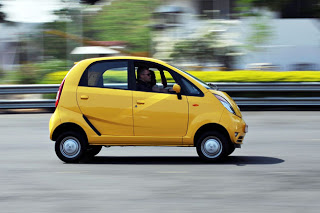The Harvard Business Review looked at success that Spacex has achieved and appears likely to achieve by radically reducing the cost of space travel. Spacex has made single use rockets that are about half the cost of competitors. Spacex appears on the verge of making reusable rockets that will lower costs up to 100 times.
Tata Motors’ has a disappointing experience with the Nano, the $2,000 compact it introduced with great fanfare in 2008, it’s clear a car can be too cheap—at least for consumers who don’t want to be associated with a low-end ride. Tata Motors has sold just 229,157 Nanos since deliveries began in 2009, and sales in March were off by 86 percent from a year earlier.
Tata won’t kill the tiny, egg-shaped car. It will soon add improvements to breathe new life into the model, a move that would ultimately bring its price closer to those of rivals. The Nano’s marketing “didn’t jell with anybody,” Slym says. Scooter drivers weren’t attracted because others “don’t think I’m buying a car, they think I’m buying something between a two-wheeler and a car. Anyone who had a car didn’t want to buy it, because it was supposed to be a two-wheeler replacement.”
The Pixel, a Nano-based concept vehicle Tata first showed in 2011, as an example of how the brand could evolve. The two-door hatchback takes the skeleton of the Nano and adds innovative doors that rotate up rather than open out, automatic transmission, and a diesel engine. Yet Haritha Saranga, an associate professor at the Indian Institute of Management in Bangalore, says in an e-mail that “just creating variations is not going to help increase sales. It is important to change the current image of Nano as a cheap car.”
Instead of selling solely on price, he says, the Nano must be “more aspirational.”
If you liked this article, please give it a quick review on ycombinator or StumbleUpon. Thanks

Brian Wang is a Futurist Thought Leader and a popular Science blogger with 1 million readers per month. His blog Nextbigfuture.com is ranked #1 Science News Blog. It covers many disruptive technology and trends including Space, Robotics, Artificial Intelligence, Medicine, Anti-aging Biotechnology, and Nanotechnology.
Known for identifying cutting edge technologies, he is currently a Co-Founder of a startup and fundraiser for high potential early-stage companies. He is the Head of Research for Allocations for deep technology investments and an Angel Investor at Space Angels.
A frequent speaker at corporations, he has been a TEDx speaker, a Singularity University speaker and guest at numerous interviews for radio and podcasts. He is open to public speaking and advising engagements.


